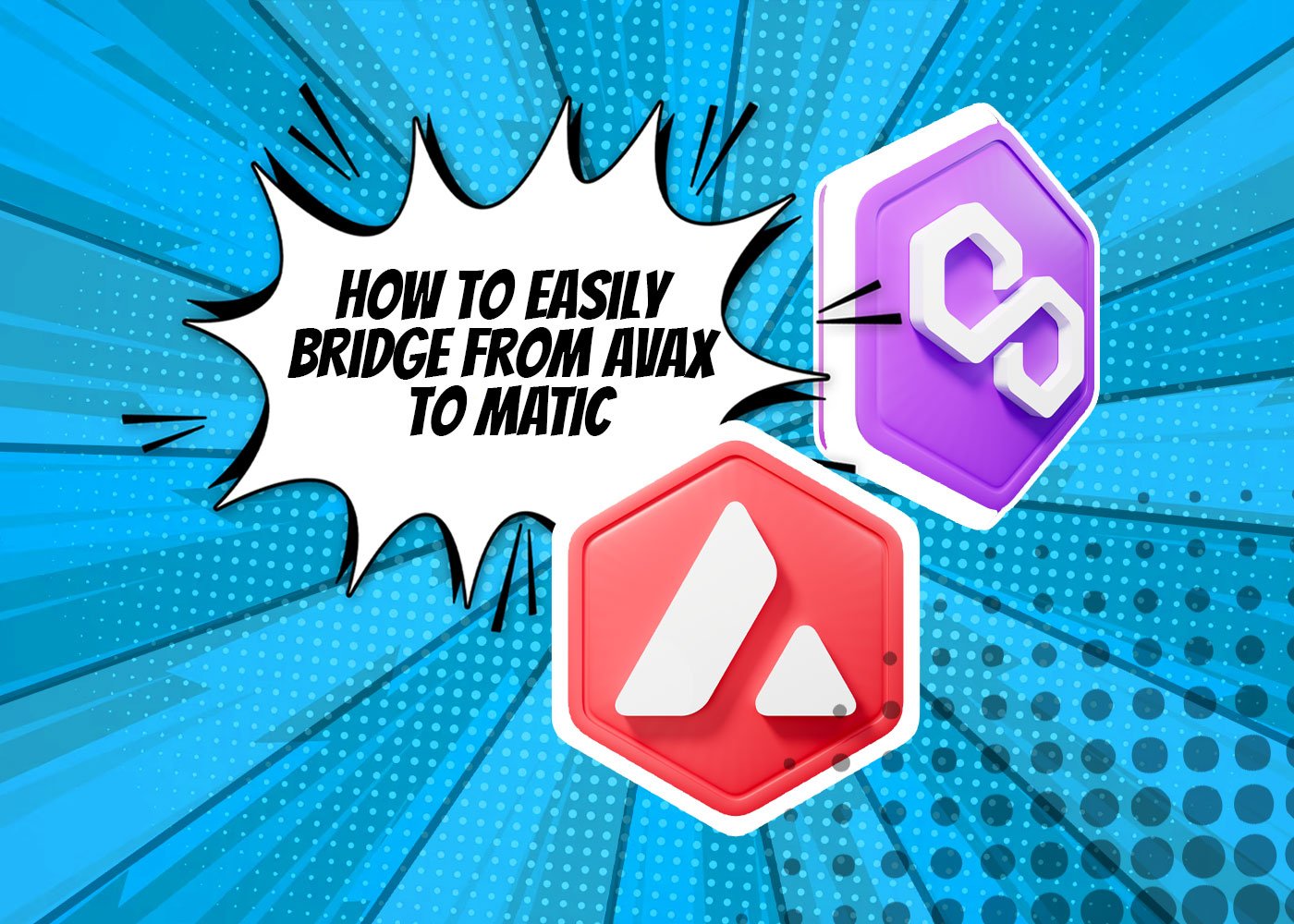Bridging from AVAX to MATIC can provide several benefits to users of both networks. One significant advantage is the ability to access a wider range of decentralized applications (dApps) and decentralized finance (DeFi) protocols. By bridging between the two networks, users can take advantage of the unique features and benefits that each platform offers.
Another advantage of bridging from AVAX to MATIC is the potential for increased liquidity. With more liquidity available, traders can enjoy lower transaction fees and faster transaction times. This can be especially beneficial for those who are looking to take advantage of arbitrage opportunities between the two networks. Additionally, increased liquidity can lead to more opportunities for users to earn rewards, such as through liquidity mining programs. Overall, bridging between AVAX and MATIC can establish new opportunities for users to explore and benefit from both networks.
A Step-by-Step Guide on How to Bridge AVAX to MATIC Using a Bridge Platform
Bridging from AVAX to MATIC can be a great way to take advantage of the unique features and benefits of both blockchain networks. The process of bridging can seem complicated, but it’s quite straightforward when you use a bridge platform. The first step is to choose a reliable bridge platform that supports both AVAX and MATIC. Once you’ve selected a platform, you’ll need to connect your AVAX wallet to the bridge platform and follow the instructions to deposit your AVAX tokens. The next step is to choose the amount of AVAX you want to bridge and select the destination network (in this case, MATIC). You’ll need to enter your MATIC wallet address and confirm the transaction. Once the transaction is confirmed, your AVAX tokens will be converted into wrapped AVAX (WAVAX) and transferred to the MATIC network. Finally, you’ll need to go to your MATIC wallet to find and claim your newly bridged tokens.
By bridging from AVAX to MATIC, you can take advantage of the unique features and benefits of each blockchain network. AVAX offers fast transaction times and low fees, while MATIC offers scalability and interoperability with other networks. By bridging between the two networks, you can access the benefits of both and unlock new possibilities for decentralized finance, gaming, and other applications. With a reliable bridge platform and a step-by-step guide, bridging from AVAX to MATIC is an easy and accessible process for anyone looking to explore the potential of these exciting blockchain networks.
Comparing Different Bridge Platforms for Bridging AVAX to MATIC
There are several bridge platforms available for bridging AVAX to MATIC, each with their own unique features and benefits. Some of the most popular platforms include AnySwap, PolyBridge, and ChainBridge. AnySwap boasts fast transaction speeds and low fees, while PolyBridge offers a user-friendly interface and support for a wide range of tokens. ChainBridge is known for its security and decentralized nature, allowing users to bridge tokens without the need for a centralized intermediary. Ultimately, the best bridge platform for bridging AVAX to MATIC will depend on the specific needs and preferences of the user.
Tips for Ensuring a Seamless and Secure Transfer When Bridging from AVAX to MATIC
Bridging from AVAX to MATIC can be a quick and easy process when done correctly. However, it’s important to take certain precautions to ensure a seamless and secure transfer. One of the most important tips is to double-check all addresses and network settings before initiating the transfer. This includes verifying the destination address on the MATIC network, as well as making sure you’re sending your AVAX to the correct bridge platform. It’s also recommended to start with a small transfer first to test the process and ensure everything is working correctly before sending larger amounts. Finally, always make sure you’re using a reputable bridge platform that has a proven track record of security and reliability.

Exploring the Use Cases for Bridging from AVAX to MATIC
Bridging from AVAX to MATIC unlocks several use cases that can be beneficial for users in the decentralized finance ecosystem. One use case is accessing liquidity on different platforms. Users can move their assets from one network to another, where they can access liquidity for different DeFi applications. Additionally, bridging can enable users to take advantage of different yield farming opportunities on both networks, potentially increasing their returns.
Moreover, bridging can be used to take advantage of price differences between assets on different networks, allowing for arbitrage opportunities. Overall, bridging from AVAX to MATIC can be useful for users looking to access new DeFi opportunities and diversify their holdings.
How Bridging from AVAX to MATIC Can Help Users Take Advantage of New Opportunities in the DeFi Space
Bridging from AVAX to MATIC can provide users with new opportunities to explore in the DeFi space. By bridging assets between two different ecosystems, users can take advantage of unique features and opportunities that each network provides. For instance, by bridging to MATIC, users can access a variety of DeFi applications on the Polygon network, such as yield farming, lending, and trading.
Furthermore, bridging between different networks can also provide users with improved liquidity, allowing them to move assets between different markets and access a wider range of trading pairs. Overall, bridging from AVAX to MATIC can help users diversify their portfolios, access new DeFi opportunities, and take advantage of the growing trend towards cross-chain interoperability in the blockchain space.
The Role of Bridging in Achieving Interoperability Between Different Blockchain Ecosystems
Blockchain interoperability has become a crucial aspect of the decentralized finance (DeFi) ecosystem. Bridging between different blockchain ecosystems, such as bridging from AVAX to MATIC, plays a vital role in achieving this interoperability. By enabling seamless movement of assets and data across different blockchains, bridging makes it possible for users to access a wider range of DeFi products and services. This helps to increase liquidity and transaction volumes, which in turn enhances the overall health and growth of the DeFi space. As the number of blockchain ecosystems continues to grow, bridging will become an increasingly important tool for achieving interoperability and driving innovation in the DeFi industry.
Understanding the Technical Aspects of Bridging from AVAX to MATIC
Bridging from AVAX to MATIC involves technical processes that allow for interoperability between different blockchain ecosystems. This includes the use of smart contracts and bridges that facilitate the movement of assets across different networks. The technical aspects of bridging also involve ensuring the security of the transfer and the accuracy of the transaction records. This can be achieved through the use of encryption and other security measures, as well as by verifying the transaction records on both sides of the bridge. Overall, a thorough understanding of the technical aspects of bridging is crucial for ensuring a successful and secure transfer of assets between different blockchain networks.
Real-World Examples of Successful Bridging from AVAX to MATIC and Their Outcomes
There are several real-world examples of successful bridging from AVAX to MATIC, and their outcomes have been positive in many cases. For instance, in March 2021, the blockchain gaming platform My Neighbor Alice successfully bridged their native token, ALICE, from AVAX to MATIC. This allowed their users to benefit from faster and cheaper transactions on the MATIC network, which ultimately led to increased user engagement and adoption.
Similarly, the popular decentralized exchange (DEX) QuickSwap also enabled bridging from AVAX to MATIC in March 2021, which helped to increase liquidity on their platform and attract new users looking for more efficient and cost-effective ways to trade cryptocurrencies. Overall, these examples demonstrate the potential benefits of bridging between different blockchain ecosystems for both users and platforms.
Examining the Future Potential of Bridging Between AVAX and MATIC Networks
As the blockchain space continues to grow and evolve, the importance of interoperability between different networks becomes increasingly clear. Bridging between AVAX and MATIC networks presents a powerful opportunity to increase liquidity and accessibility across DeFi ecosystems. As more users become aware of the benefits of bridging and begin to take advantage of these opportunities, we can expect to see continued growth and innovation in the DeFi space. With the potential to unlock new use cases, drive increased adoption, and spur on new technological advancements, bridging between AVAX and MATIC networks is likely to play a significant role in shaping the future of the blockchain space.








